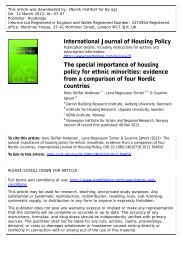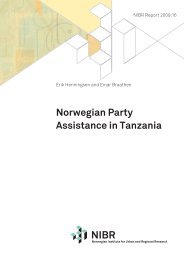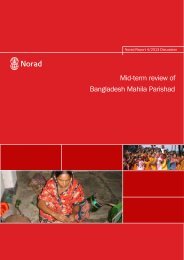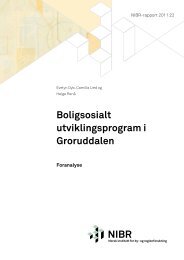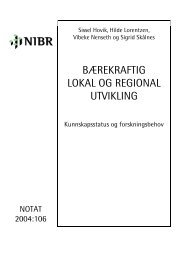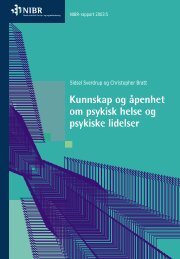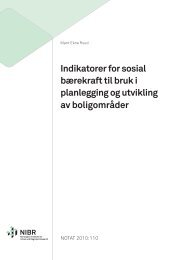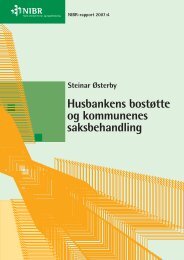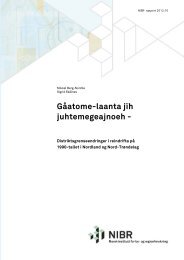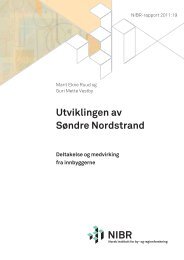Forvaltningsmuseenes og NIKUs ansvar og roller i forvaltningen av ...
Forvaltningsmuseenes og NIKUs ansvar og roller i forvaltningen av ...
Forvaltningsmuseenes og NIKUs ansvar og roller i forvaltningen av ...
- No tags were found...
Create successful ePaper yourself
Turn your PDF publications into a flip-book with our unique Google optimized e-Paper software.
16and drawbacks of the current system. At the same time, the studyalso explores what could potentially be done to enhance thecurrent management model, from the points of view of theadministrative museums and NIKU.Tripartite decision-making model in heritage managementThe manner in which exemption orders affecting automaticallylisted cultural monuments are granted is based largely on atripartite decision-making model. The responsibility of the countyauthorities derives from their role as notification authority andtheir duty to undertake the primary in situ survey or assessment.The county authorities also coordinate the opinions of the variousparties in planning applications, also when they involveautomatically listed artefacts from medieval towns and ship finds.The administrative museums and NIKU undertake the necessaryassessments and make recommendations. The ultimate decision,however, lies with the Directorate for Cultural Heritage(Riksantikvaren).The county councils do not, however, undertake on-siteinspections or studies connected with ship finds and automaticallylisted items under water. These are done by the maritimemuseums. These museums are also instructed to assess whether anaction is in conflict with a ship find or automatically listedunderwater artefact. When cases involve listed items in medievaltowns, convents, ecclesiastical buildings, castles/fortresses anddefence works/fortifications, urban sites/ruins and standingbuildings of all types, notification duty lies with the Directorate forCultural Heritage.By giving administrative museums and NIKU with specialistexpertise in archaeol<strong>og</strong>y the authority to act as expert bodies, itwas the intention of the decision-making procedures to take intoaccount the needs of a knowledge-based system of management ofthe archaeol<strong>og</strong>ical heritage. Where responsibilities sit in cases anexemption order is set out in the regulation on separation ofprofessional responsibilities (Forskrift om faglig <strong>ansvar</strong>sfordeling m.v.etter kulturminneloven).Responsibility for the management of automatically listed artefactslies with the Ministry of the Environment. In allowing universitymuseums and maritime museums, which in legal terms h<strong>av</strong>e theNIBR-rapport 2012:30



